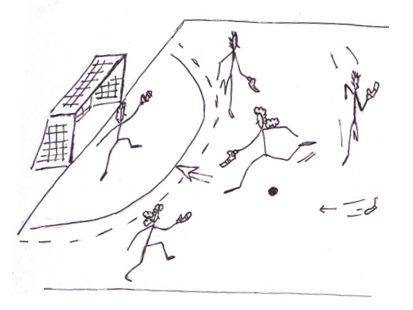


The effect of equipment scaling on the skill acquisition of beginning tennis players. La enseñanza comprensiva del deporte: dificultades del profesorado en el diseño de tareas y en la estrategia de pregunta-respuesta. Social networks and social influences in adolescence. Educational researcher, 31(4), 3-14.Ĭotterell, J. Authorizing students’ perspectives: Toward trust, dialogue, and change in edu-Ĭation. Sport in society: Issues and controversies (10ª edición). eJournal de la Recherche sur l’Intervention en Éducation Physique et Sport, 31, 27-52.Ĭoakley, J. Avis des acteurs sur l’utilisation de fiches d’observation et du débat d’idées. (2014) Introduction d’approches socioconstructivistes dans le cours d’éducation physique. Change: Transformations in Education, 9(1), 49-58.Ĭloes, M., Derome, S.

‘I thought I’d hate cricket but I love it!’: Year six students’ responses to Games Sense. Massachus- sets: University of Massachusetts. The tactical games model sport experience: An examination of student mo- tivation and game performance during an ultimate frisbee unit (Tesis doctoral). Consciousness and cognition, 30, 247-255.Ĭarpenter, E.J. Scaling sporting equipment for children pro- motes implicit processes during performance. International Journal of Sports Science and Coaching, 6(2), 219-228.īuszard, T., Farrow, D., Reid, M. More Cheers and Fewer Tears: Examining the Impact of Competitive Engineering on Scoring and Attrition in Youth Flag Football. European Physical Education Re- view, 6(1), 7-26.īurton, D., O’Connell, K., Gillham, A. Implementing a game sense approach to teaching junior high school basketball in a naturalistic setting. When physical activity participation promotes inactivity: Negative experiences of Spanish adolescents in physical education and sport. Aachen: Meyer andīeltrán, V., Devís, J., Peiró, C. Elling (Eds.), Values and Norms in Sport, Critical Reflections on the Position and Meanings of Sport in Society (pp. (2001) Organized sport programs for children: do they meet the interests of the children effec- tively. Journal of Sport & Exercice Psychology, 25, 551-567.


 0 kommentar(er)
0 kommentar(er)
